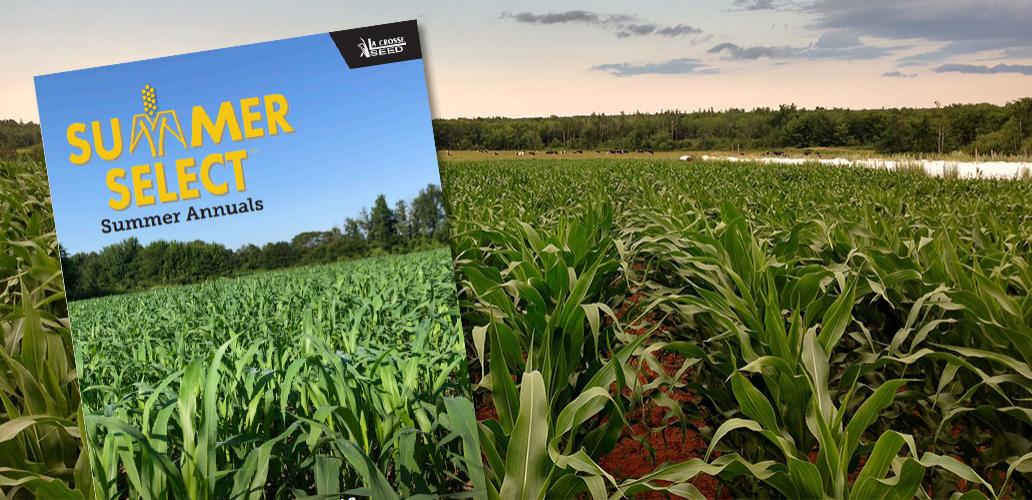Forage First Guide I Summer Select Guide
Greater Value. Good Move. Yield and quality matter. But there’s more. Our goal is to provide a higher standard for forage to maximize ROI– while keeping your wallet in mind. We take pride in delivering proven products that increase the bottom line at a good price.

80% Coated Annual Ryegrass
12% Crimson Clover
8% Tillage Radish
Soil First 175 AccuSpread cover crop mix has coated clover and coated ryegrass to equate more uniform spread patterns and consistent germination in broadcast applications.
CHARACTERISTICS:
Non-Forage Benefits:
1 = Poor; 5 = Excellent
Compaction Alleviation: 5
Weed Suppression: 4
Biomass Production: 4
Erosion Control: 4
Disease/Pest Control: 4
Pollinator/Beneficials: 3
P & K Cycling: 4
Ease of Establishment: 4
Nitrogen Fixer/Scavenger: Both
Nutritional Value:
Values Vary Greatly Depending on Maturity
Crude Protein: 10-16
DM Tons/Acre: 2-5
Days to First Harvest: 45-50
Days to Next Harvest: Spring
Ranking (Good, Better, Best):
Graze: Best
Baleage: Good
Chop: Better
SEEDING:
Planting Window:
Aug.-Sept.
Seeding Rate:
Mono (lbs./acre): 20-25
Forage (lbs./acre): 25-30
Seeding Info:
Seeding Depth (in./with drill): 1/4-1/2
Germination Soil Temp.: 45 F
Bulk Density (lbs./ft.³): 35
Aerial Application Rate: 25-30
MANAGEMENT:
Considerations:
Any time annual ryegrass is used, spring management has to be a main priority. Keep ryegrass from going to seed at all costs. Annual ryegrass not terminated can have adverse effects on any subsequent grass crops. The use of ryegrass blends have given ryegrass a bad reputation – make sure it is a single, respected variety. Multiple maturities make control even more complex. The addition of crimson clover may attract voles and may need termination even earlier to decrease the residue. See FAQ #8 in the Soil First® Management Guide.
Termination:
Radish will terminate with multiple nights in the teens. If radish overwinter, glyphosate and 2,4-D provide effective control. Crimson clover should winterkill north of Zone 7; if crimson overwinters, control with glyphosate and 2,4-D. For annual ryegrass termination, glyphosate by itself or with other grass killers can be used, but several key management criteria need met to ensure success. For more information, see page 14 in the Soil First® Management Guide.

Ratings
Scale 1-9, where 9 = best or most pronounced
Compaction Alleviation
Weed Suppression
Biomass Production
Erosion Control
Disease/Pest Control
Pollinator/Beneficials
P & K Cycling
Ease of Establishment
- Traditional combination of species for breaking up compaction, sequestering leftover nutrients, and building soil structure
- Flexible seed mix to use in front of corn, soybeans, and many other cash crops
- Annual ryegrass in SF 175 utilizes CrosseCoat Technology – aiding in ballistics, spread patterns, and more consistent germination
- Annual ryegrass justifies spring management planning in areas where it’s known to overwinter

.png)
.png)


.png)











